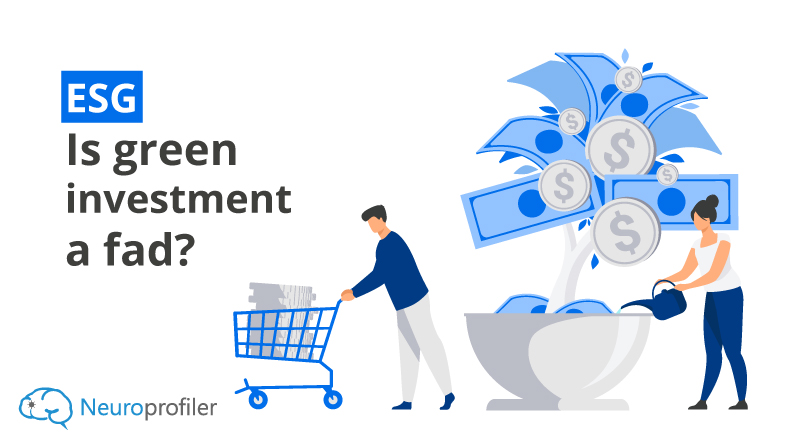Whether you’ve been convinced for years that ESG products are the future of investment, or whether you previously considered them to be unattractive financial products, it is clear that the number of ESG investment funds is on the rise. Favored by regulation, sustainable finance is responding to market demand while offering higher profitability. Is this just a fad or a real underlying trend? We take stock.
ESG: a boom correlated to investors’ expectations
Although the first initiatives in favor of socially responsible investment (SRI) were observed as early as the stock market crash of 1929, it was at the dawn of the 2000s that sustainable finance took off. Public opinion then took hold of climate issues and gave increasing importance to environmental preservation. At the same time, the ESG criteria known worldwide today were created, via the Principles for Responsible Investment (PRI) and organizations such as the Global Impact Investing Network. Since then, the demand for more sustainable financial products has continued to grow.
Between 2013 and 2017, total assets invested in Europe in socially responsible investment strategies increased by 25%, a growth of about €2500 billion according to the Global Sustainable Investment Review. In 2020, 60% of investors say they are looking for impact in their investments. This percentage even concerns 80% of Millennials (Devere Group study). This growing demand has pushed financial institutions to provide investors with solutions that meet this new investment philosophy… and the expectations of the regulator.
ESG: sustainable investment encouraged by regulation
Several texts have gradually emerged to further regulate SRI, from the SFDR regulation to the latest adjustments to MiFID II regulations. Applicable since March 10, 2021, the European Sustainable Finance Disclosure Regulation (SFDR) requires distributors of savings and investment products to classify financial products according to their environmental and social impact. This taxonomy of green activities could even lead to the creation of an ecolabel for financial products.
The last part of MiFID II, which should come into force during 2022, will require clients to be asked about their ESG preferences. The inclusion of ESG preferences in the suitability test is intended to give investors back the power over the use of their money, in line with the MiFID philosophy. Launched in the wake of the 2008 financial crisis, this text seeks to further protect investors.
Taking into account investors’ ESG preferences: what business opportunities?
Do investors prefer to invest in environmental or societal issues? What trade-offs are they willing to make between extra-financial impact and financial performance? Taking ESG preferences into account is not just a way to meet a new regulatory requirement. It is a real business opportunity that will help boost individual investors’ savings while giving meaning to their investments.
As investors become more conservative and interest rates are at their lowest, European banks are looking for new sources of profitability. Being able to convert from euro funds to unit-linked products is a major challenge for sales teams. It is in this sense that the craze for ESG products should be seen in a very positive light. Most ESG products are more dynamic and fall into the CU category. Moreover, ESG products have recently performed very well. 60% of European ESG funds have outperformed traditional funds over the past 10 years! (Morningstar study)
Promoting ESG products will help to acquire more clients, to boost and increase their assets under management. On the condition that they seize the opportunity offered by the regulations, without simply adding a line to the existing MiFIDII or DDA questionnaire…
ESGProfiler: an innovative solution to surf the green trend… and gain in profitability
To respond to banks’ issues and regulatory changes, Neuroprofiler has developed ESGProfiler. This unique tool on the market allows evaluating clients’ preferences in terms of sustainable investment, via an interactive questionnaire based on behavioral finance. Fun and adaptive, the course proposed by ESGProfiler allows to :
- Evaluate clients’ appetite for sustainable finance
- Understand the impacts sought in their investments
- Identify the areas they wish to exclude
The associated behavioral finance algorithm then selects the ESG product most in line with the client’s values. While the ESGProfiler enables full compliance with MiFID II and DDA, its real added value lies in its ability to transform this regulatory exercise into a marketing tool. The assessment of the client’s appetite for sustainable finance becomes a pretext for getting to know him better, to recommend the financial product best suited to his expectations… In this way, you can boost your customers’ savings, while positioning yourself as a modern financial institution, using the latest gamification technologies.
More than just a fad, green investing is becoming a worldwide trend that cannot be ignored. Financial institutions that take into account the expectations of their investors today will be the most profitable tomorrow. Thanks to the ESGProfiler, Neuroprofiler offers a conversion rate of 10% for clients of Euro funds into UC. Ask for a demo!


